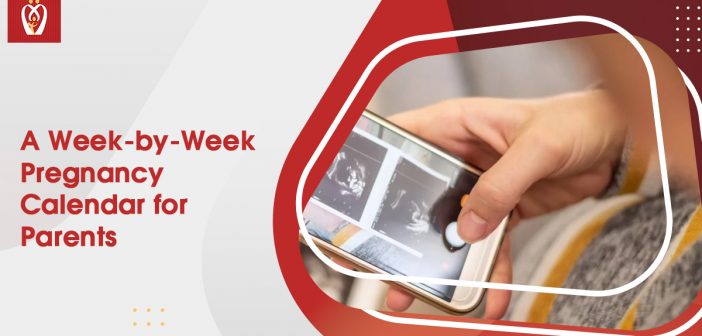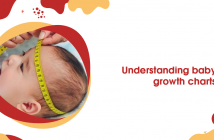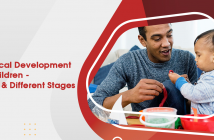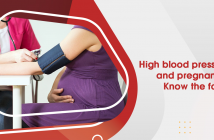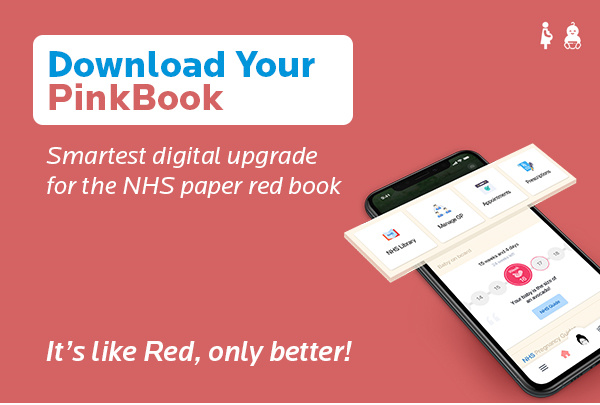There are three trimesters of pregnancy. More than 13 weeks are spent in each trimester. The first month is the beginning of the first trimester. Read full blog for A Week-by-Week Pregnancy Calendar for Parents.
What is gestational age?
Gestational age is used to measure the length of time of a woman’s pregnancy. It begins on the first day of your last menstrual cycle (LMP).
The gestational age of a pregnant woman might be a little perplexing. Pregnancy is often defined as a nine-month period. And yes, you are pregnant for around nine months. A full-term pregnancy normally lasts around 10 months, but this is because pregnancy is counted from the first day of your last menstrual period (LMP), which is about 3-4 weeks before you’re truly pregnant.
It’s very normal for women to be unable to pinpoint the beginning of their previous menstrual cycle. An ultrasound is the most accurate early-pregnancy test for determining a woman’s gestational age.
Pregnancy calendar: Week 1
This is actually your menstrual period. Since the expected birth date is derived from your last period, this week counts as one of your 40 weeks of pregnancy, even though the baby hasn’t been conceived yet.
Pregnancy calendar: Week 2
The sperm will fertilise your egg at the end of this week.
Pregnancy calendar: Week 3
The cell divides into two after 30 hours of conception. This cell (zygote) has split into 16 cells after three days. The zygote has moved from the fallopian tube to the uterus after another two days in the womb. It takes the zygote seven days after conception before it may begin to embed itself in the thick uterine lining (endometrium). A blastocyst is the new name for the zygote.
Pregnancy calendar: Week 4
The developing foetus is the size of a grain of rice. All of the body’s systems are being formed by rapidly proliferating cells, including the digestive system.
Pregnancy calendar: Week 5
The central nervous system will ultimately be formed from the developing neural tube.
Pregnancy calendar: Week 6
The embryo is now the baby’s official name. It has a length of around 3 mm. At this point, it is secreting hormones that prevent the mother from experiencing a menstrual cycle.
Pregnancy calendar: Week 7
We can feel the heartbeat now. The placenta and amniotic sac of the embryo has formed. The uterine wall is being penetrated by the placenta in order to get oxygen and nutrients from the mother’s blood.
Pregnancy calendar: Week 8
The embryo has grown to a length of 1.3 cm at this point. When the spinal cord grows quickly, it resembles a tail. The head seems to be out of proportion.
Pregnancy calendar: Week 9
The development of the eyes, lips, and tongue is well underway. The embryo’s small muscles enable it to begin moving. The liver of the embryo is producing blood cells.
Pregnancy calendar: Week 10
The foetus, as the embryo is now known, is around 2.5 cm long. All of the internal organs of the body have begun to take shape. Fingers and toes are forming on the hands and feet, which used to appear like nubs or paddles. Brain waves indicate that the brain is actively working.
Pregnancy calendar: Week 11
Inside the gums, new teeth are sprouting from the gum tissue. The baby’s heart continues to grow.
Pregnancy calendar: Week 12
The fingers and toes are still attached to each other by webs of flesh. Prenatal screening during the first trimester, which includes both a maternal blood test and an ultrasound of the unborn child, is possible at this time.
Pregnancy calendar: Week 13
The foetus is able to swim pretty furiously when in the womb. It has grown to a length of almost 7 cm.
Pregnancy calendar: Week 14
Over the completely formed eyes, the eyelids are also fused together. Now that it has vocal chords, the baby can wailingly express itself. Perhaps it will even begin to lick its thumb. Nails are forming on the fingers and toes.
Pregnancy calendar: Week 16
The length of the foetus is around 14 cm. A tongue with taste buds has appeared, along with eyelashes and eyebrows. If the first trimester screening was not performed, the maternal serum screening in the second trimester will be available at this time.
Pregnancy calendar: Week 18-20
One may expect to get an ultrasound. An ultrasound examination of the foetus is being performed to look for any structural abnormalities, placental abnormalities, or multiple pregnancies. It’s not uncommon to hear a foetus hiccupping in the womb.
Pregnancy calendar: Week 21
The length of the foetus is around 21 cm. Muffled noises from the outer world may be heard by the ear. There are prints on the fingers. An ultrasound scan now makes it possible to differentiate between the genitals.
Pregnancy calendar: Week 24
The foetus measures around 33 cm in length during conception. The top and lower lids of the baby’s eyelids have separated, allowing it to open and close its eyes. Lanugo (fine hair) covers the skin, which is then shielded from the environment by a waxy secretion (vernix). The lungs of the newborn are moving in order to breathe.
Pregnancy calendar: Week 28
Your baby might weigh 2 pounds by now. From top to bottom, it measures around 37 cm. The baby’s huge head has now caught up with the infant’s developing body, making the newborn seem more in balance.
Pregnancy calendar: Week 32
Most of the time, the infant is sleeping. It has a powerful and synchronised movement. In preparation for childbirth, the foetus is likely in the “head down” position.
Pregnancy calendar: Week 38
The infant measures around 46 cm long. It’s presumably ready to be born since it’s buried its head into its mother’s pelvis. It has a great chance of surviving if it is born right now. Next to several weeks, the lungs will grow at a quick pace.
Pregnancy calendar: Week 40
The foetus is around 51 cm long and is ready to be birthed. There is no recognised reason for the commencement of labour. Physical, hormonal, and emotional variables between the mother and infant are most likely to be the factors.
As an expecting parent, you will find all the tools you will need in the Nurturey Pink Book, a digital alternative to the NHS Redbook! Pink Book has tools that help you manage your prenatal tests, schedule appointments with your GP, kick counter, timeline, and receive trusted NHS guidance, as well as many more! Learn more at https://nurturey.com/

